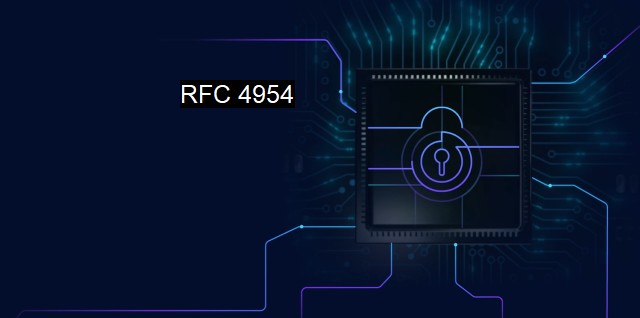What is RFC 4954?
An In-depth Analysis of RFC 4954: Standardizing Email-Based Virus Detection and Mitigation
RFC 4954, also known as the SMTP Service Extension for Authentication, is a standard protocol developed by the Internet Engineering Task Force (IETF). RFC stands for 'Request for Comments', a method used for developing and sharing ideas in the world of Internet protocols and systems. Each RFC represents a specification, a standard, or an idea about an aspect of the internet and the IETF develops, discusses, and publishes these RFCs. Today, these RFCs form the underlying infrastructure of the cyber world.In the context of cybersecurity and antivirus protection, RFC 4954 is pretty significant. It defines an extension to the Simple Mail Transfer Protocol (SMTP) that enables SMTP clients and servers to negotiate the use of security layers for data encryption and provides methods for authentication. Given the increasing cases of phishing, spamming, and other email-borne threats, the SMTP Service Extension is crucial in securing email communication by implementing authentication procedures.
Established in 2007, RFC 4954 includes several methods for SMTP servers to authenticate SMTP clients and vice versa, providing a way to augment the senders' and recipients' trust in the email services they use. It ensures that the email being sent or received is through a verified and protected email server. This feature keeps malicious spammers and phishers at bay who often disguise themselves as trusted email services or users to trick the victims.
Darknet threats and Internet security breaches often involve breaching the SMTP security and disseminating malicious software or extracting sensitive information from personalized emails. SMTP security loopholes can also potentially result in Denial-of-Service (DoS) or Distributed Denial-of-Service (DDoS) attacks on networks, causing the system to become overloaded with fake requests. Given these risks, the necessity of employing RFC 4954 protocols becomes abundantly clear.
RFC 4954 methods have been uniformly adopted in almost all email services and clients such as Gmail, Microsoft Outlook, Apple Mail, and many others, contributing to secure and trustworthy email communication.
Whenever an SMTP client connects flawlessly with the SMTP server, it's most likely because RFC 4954 is at work behind the scenes. It certifies the server's identity back to the client and ensures that the sensitive data (login IDs, passwords) transmitted between the sides are encrypted.
The exchange of command and responses during this mutual authentication is part of the RFC 4954 process. The first is an "AUTH" command by the client. If the server supports the authentication mechanism specified by the client, it responds with a "334" status code. The final part of the RFC 4954 process is the authentication exchange itself — briefly, the two sides exchange information making sure each knows the other to be genuine.
In the vast world of emails, remaining secure from threats and attacks is of vital importance. Given that malicious hackers are continually finding new ways and loopholes to gain unauthorized access and cause damage, RFC 4954 is one of the pillars trying to maintain that security. It doesn't provide a full-proof guarantee from email attacks, but when combined with strong passwords, adherence to good cybersecurity practices, and using reliable antivirus software, it goes a long way in ensuring a safer internet experience.
RFC 4954 is a crucial part of cybersecurity infrastructure — a standard protocol that paves the way for secure, authenticated email communication. It plays an instrumental role in ensuring the menace of spamming, phishing, and other malware exploits are kept to a minimum, thereby ensuring the ecosystem of our Internet-driven world remains safe and secure.

RFC 4954 FAQs
What is RFC 4954?
RFC 4954 is a technical standard document created by the Internet Engineering Task Force (IETF) that outlines a way to represent antivirus information in an XML format.What is the purpose of RFC 4954?
The purpose of RFC 4954 is to provide a standard way for antivirus software to share information with other programs or systems. It enables communication between antivirus programs and other security systems in a consistent and predictable manner.Who is affected by RFC 4954?
RFC 4954 primarily affects developers of antivirus software and other security tools. However, anyone involved in cybersecurity may be interested in the standard as it provides a common format for sharing antivirus information.How does RFC 4954 improve cybersecurity?
RFC 4954 improves cybersecurity by promoting interoperability between different security systems. When antivirus software can share information in a consistent and standardized way, it becomes easier for multiple tools to work together to protect against threats. This can result in more efficient and effective security measures overall.| | A | | | B | | | C | | | D | | | E | | | F | | | G | | | H | | | I | | | J | | | K | | | L | | | M | |
| | N | | | O | | | P | | | Q | | | R | | | S | | | T | | | U | | | V | | | W | | | X | | | Y | | | Z | |
| | 1 | | | 2 | | | 3 | | | 4 | | | 7 | | | 8 | | |||||||